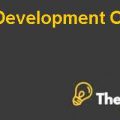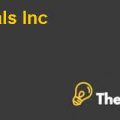Innovation And ; Business Success Case Study Solution
The Innovation S- Curve Framework
The innovation S-curve is one of the most famous and widely conceptualized technology life cycle. The framework or model is used with the intent of determining the performance in regard to the effort and time. Not only this, it also assists in evaluating the maturity level of product or industry.
As a result, at the time of evaluating the industry or product, it is vital to understand where it is on the curve because of the number of implication that tends to result out of the possible pitfalls or risk being related for the certain phases.
Example of innovation S-curve
In order to have a closer look over and to understand the concept of the innovation S-curve better, the audio industry is taken as an example. At the initial phase, which is referred to ferment stage, there had been a cassette tape that was invented by Philips. Additionally at the takeoff phase, Walkman was invented by Sony, Walkman was considered exceptionally able to answer the demand of listening of customers to their cassette outside. As a result of the success of Sony, the market reached to its maturity phase since there were many competitors in the marketplace manufacturing the similar devices such as Maxwell, TDK, Philips and Sony etc.
In addition to this, at the discontinuity phase of the S-curve, Philips and Sony were developing the compact disk and by doing so, distrusting the market, thus commenced a new S-curve.
In short, innovation S-Curve framework is the robust framework that can be used for analyzing different kind of industries at their different life cycle stages. Not only this, the framework can be used for explaining the failures and success of different industries.
Corporation Failed to Innovate
Corporations that have experienced the innovation success have grabbed onto it and they believe that the secret behind their everlasting success story is innovation. But there are many companies which failed to innovate due to their late or no response to change that is inevitable and on which the success of the company highly and greatly depends. It can be said that without resilient and robust innovation strategy, the success of the Corporation cannot be ensured in long run.
Nokia, one of the highly dominant and successful company founded in Finland. The operating profit of Nokia reached at $1 billion in 1995 and further it went to $4 billion in 1999. It became the bestselling mobile phone with the largest market share and brand recognition value proposition. It was the only company that created the cellular network all around the world. In the early 2000s, Nokia was considered as the global leader in the mobile phone industry. Since the internet had newly arrived in the market, other mobile manufacturing corporations started understanding how data despite of voice was the future of communication. Notably, Nokia failed grasping the concept of software and the company kept focusing on the hardware due to which the management dreaded to alienate current customers if they changed too much. The notable mistake of Nokia was the fact that the company did not lead the drastic change in the experience of its users. This in turn caused the company develop a mess of an OS i.e. operating system with the bad customer experience that just had not fit to market. Nokia, itself have been overestimating its brand, not only this but it started to believe that it would succeed and arrive late in the game of smartphone. The innovation principle was forgotten by Nokia when it was at its peak point.
Significantly, I Phone was launched by Steve Jobs in 2007 a phone with no keyboard, it became revolutionary at that period of time. The use of touchscreen grasped the larger customer base and is continued till now. In 2008, Nokia decided to compete with android. But the products of Nokia were not competitive enough. It is analyzed that the reason behind the failure of Nokia are important to discuss which are listed below:
- The technology of Nokia was inferior to I Phone.
- Lack of innovation strategy and vision
- Late adaption of technology influx in mobile phones
- Lack of technical competence
Key takeaways
The culture status of Nokia led the company to an environment of shared fear which impacted how workforce were engaging with each other. The human factor added to structural and economic forces and altogether they generated a temporal myopia state that hindered the ability of Nokia to innovate at its core. It was stated by the employees that the director and tip manager had not been abiding the core values including challenge, respect, renewal and achievement. It is learnt that the organization should have the power of constantly challenging the status quo, it would most likely allow the organization and leaders to embrace the culture of change.
In addition to this, the lesson drawn includes the collaborative style of leadership that is mandatory, the process of innovation need to be encouraged at all level and the leaders of an organization should learn how to listen to workforce, employees, customer and partners. Before being capable of understanding the emotions of employees, it is important that the leaders become mindful. Emotional intelligence IE is mandatory when the leaders have a mix of generation such as Z and Millennials. Additionally, the leaders and directors should master the power of taking the responsibilities for the failed innovation, bad decisions and lost market share regardless of the danger of losing their role, status and bonuses. By learning quickly from the past action and failures which would help the organization in minimizing and repairing risk and damages and design even better products and services in the future. The culture of company includes environment, ethics, mission, values, expectations and goals. Since Nokia had been slowing to cope up with the prevailing market trend and opportunities like touchscreen, it became one of the major reason behind Nokia’s drastic failure.
Change Concepts as Improving Factors
Unlike Nokia, how I would apply the change concept or approaches to the business to innovate depends upon certain questions which need to be answered including; the gap between future and current state of company, how different is the future state from the current one. At the time of planning a project, I would rather focus on the solution called a transition state. By adding the perspective of change management, it has become significant to understand how much disruption or change is taking place because it lasts inevitable impact on the way of managing the change.
For the technology corporation, I would introduce agile method being comfortable with making rapid adaption for staying on the top of the change within the industry. In contrast to technology firm, I would introduce agile method in Utility Corporation being comfortable with the waterfall approach and long term requirement of the delivery of solutions. For the technology corporation, the agile method is referred to an incremental change whereas in Utility Corporation it is referred to radical change required to ponder over delivering change. These discussed scenarios need different approaches for the management of change (McGahan, 2004). I would ensure that the change management plans and strategy should reflect whether the change is radical or incremental. I would start my innovation project with the concrete and clear innovation assignment to succeed and to avoid losing market share due to the failure to innovate. Also following and adapting the changing trends within the industry, by having culture conducive to change, flexible standards, clear visions and culture promoting innovation within the organization. Shortly, businesses of all kind should adapt to the changing organization climate (Pisano, 2015)...............
This is just a sample partical work. Please place the order on the website to get your own originally done case solution.







